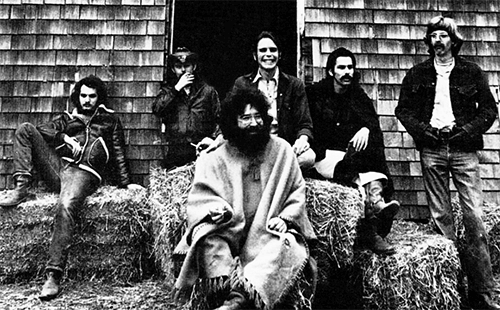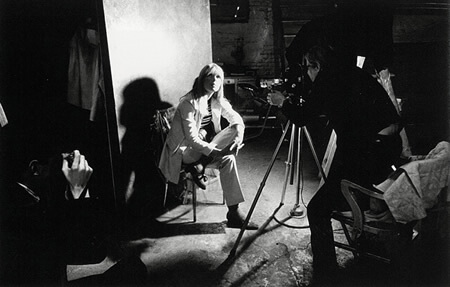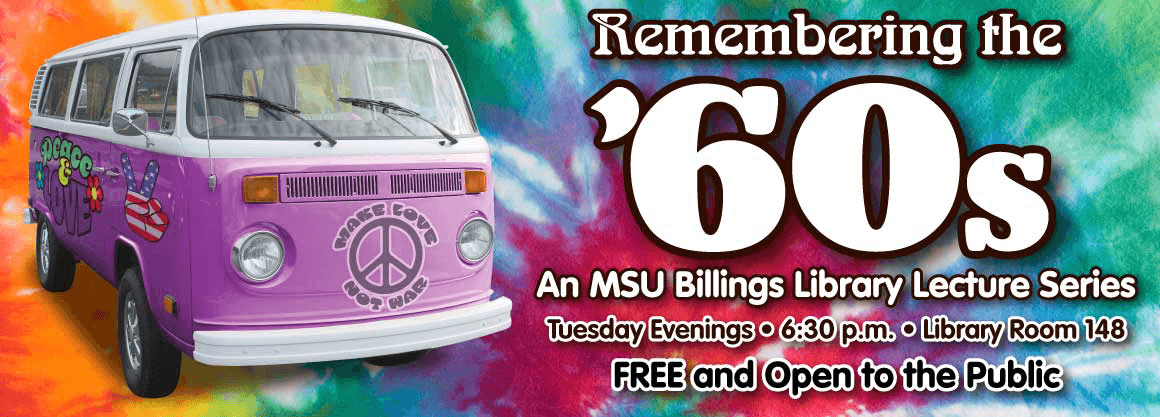September 22 6:30 pm in Library 148
Dr. Keith Edgerton
Sex, Drugs, and Rock & Roll:The Legacy of the 1960s
Why the 1960s? For one it was a decade of some of the most dramatic and far-reaching changes in not only the 20th century, but in American history.There were seismic shifts in politics, society, culture, foreign policy, and technology that reverberate down to the present. And we Americans love drama and most of it was televised for us nightly on the evening news.
From the civil rights struggles of African Americans (which will eventually spawn a wide range of other social struggles such as the American Indian Movement, the women’s and gay and lesbian movements), to the tragic political assassinations, to the escalating war in Vietnam and the concurrent anti-war movement, to the all-in effort to land a man on the moon, to the maturation of the environmental movement to the flowering of the post-world war II baby boomers, there is hardly a dull moment when we think, again, about the impact of the 1960s on America and the rest of the world. It was a decade that revealed America at both its best and worst. And it is a decade whose legacies are still felt today.
»» Dr. Edgerton's Presentation
September 29 6:30 pm in Library 148
Dr. Susan Balter-Reitz
What a Long Strange Trip: The Grateful Dead from Woodstock to Altamont
The Grateful Dead serves as the archetype of the San Francisco art and music scene. With roots in the Prankster’s Acid Tests, the band fashioned a unique fusion of classical American genres that provides insight not only to the musical innovation of the 1960s, but also on the art, culture and revolution that emerged from the Bay Area during the latter half of the decade. This talk will highlight the musical, artistic and cultural changes that the Grateful Dead personify.
»»Dr. Balter-Reitz' Presentation
»»See related Billings Gazette article
October 6 6:30 pm in Library 148
Dr. Michael Havens Turn On, Tune In, Drop Out: 1960s Drug Culture and Legislation
Turn On, Tune In, Drop Out: 1960s Drug Culture and Legislation
The 1960’s drug culture presented a very challenging set of health care problems for our country. Policy decisions were frequently made based on misunderstandings of the drugs, the people taking them and the reasons they were taking them. The country’s social reactions to recreational psychedelic drug use reflected previous experiences with the opiates, marijuana and alcohol. None of these previous experiences prepared us for what was coming in the 60’s. From Richard Nixon calling Timothy Leary “the most dangerous man in America” to covert LSD “projects” by the CIA, the country seemed to be directionless in how to cope with these new challenges. Amazingly, by the end of the decade, drug policies and legislation were passed that provided for education, treatment, rehabilitation and reform. These policies continue to affect and influence our lives today.
October 13 6:30 pm in Library 148
Dr. Leanne Gilbertson Warhol’s Stars: Fashion and Failure in the 1960s
Warhol’s Stars: Fashion and Failure in the 1960s
During the early Pop period at the beginning of the 1960s, American artist Andy Warhol
(born Andrew Warhola) employed icons of the silver screen in some of his best-known
artworks. Over the course of the decade the artist’s explorations of the relationships
of fame and image, celebrity and media led to a number of artistic and social experiments
in his famous New York City studio/loft/gathering place, the Silver Factory. Here
some of the most recognizable figures of the decade mixed with fascinating unknowns,
some of the most famous and fashionable figures of the period intermixed with those
remembered mainly for their tragic falls or those whose stories have largely faded
from history. For Warhol, all of these “great people” were his Superstars, compelling
personalities who entered the artist’s orbit and found a brief moment to shine in
the alternative social world and production studio he had created.
This presentation will focus on Warhol’s Screen Test films, created between 1964-66,
and explore how these short portrait films—of which there are 472 total—reflected
and contributed to shifting attitudes about fashion and beauty, success and failure,
in the 1960s. Examples of the Warhol Screen Tests are on view at Northcutt Steele
Gallery, Montana State University Billings through October 20 and will be available
for viewing immediately following the talk. For more information on the Warhol exhibition
visit: Warhol's Women Gallery
»»Dr. Gilbertson's Presentation
October 20 6:30 pm in Library 148
Dr. Stuart Snyder, Dr. Loren Acton, and Dr. John Jurist
The Final Frontier: The Space Program of the 1960s
Join us for a panel presentation of the origins and history of the U.S. Space program. We will also talk about the influence of the space program on our personal lives, and on society. While we will focus on the nineteen sixties, we will also discuss the current and future state of the space program, and its importance to humanity.
October 27 6:30 pm in Petro Theatre
Dr. Mark Fenderson, Dr. Gary Behm, and John Roberts
An ensemble of local musicians, headed by three Montana State University Billings
faculty, will present an array of Salsa, Bossa Nova, and Jazz of the 1960s.
See also:
Questions? Call 406.657.1662


